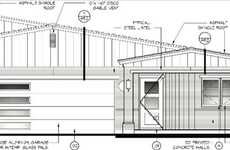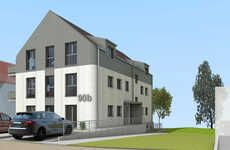
The Serendix 'Sphere' House Was Constructed in 24-Hours
Michael Hemsworth — March 22, 2022 — Art & Design
References: serendix.jp & homecrux
3D printing technology shows strong merit for the architectural design field given its ability to erect structures in relatively hands-off manner, which is exactly what the Serendix 'Sphere' house identifies.
The house was constructed by the company using 3D printing in just 24-hours, which is quite the feat and identifies how the technological progress has improved drastically over the past several years. The house features 100-square-meters of space on the interior and is paired with a price point of less than three-million Yen (roughly $25,000).
The Serendix 'Sphere' house could help to drastically change how housing is constructed thanks to its speedy and cost-effective profile. The company plans to start selling the 3D printed homes starting in December 2023.
Image Credit: Serendix
The house was constructed by the company using 3D printing in just 24-hours, which is quite the feat and identifies how the technological progress has improved drastically over the past several years. The house features 100-square-meters of space on the interior and is paired with a price point of less than three-million Yen (roughly $25,000).
The Serendix 'Sphere' house could help to drastically change how housing is constructed thanks to its speedy and cost-effective profile. The company plans to start selling the 3D printed homes starting in December 2023.
Image Credit: Serendix
Trend Themes
1. 3D Printed Housing - The Serendix 'Sphere' house demonstrates the potential for 3D-printed homes to be constructed quickly and cost-effectively.
2. Automated Construction - The use of 3D printing technology for building construction shows potential for increased automation and decreased labor requirements.
3. Affordable Housing - The relatively low cost of constructing the Serendix 'Sphere' house suggests the potential for 3D printing technology to help address the global shortage of affordable housing.
Industry Implications
1. Construction - The construction industry could potentially benefit from the incorporation of 3D printing technology for automated and cost-effective building construction.
2. Real Estate - The potential for 3D printing technology to create affordable homes may disrupt the traditional real estate market by providing new options for affordable housing.
3. Architecture - The use of 3D printing technology for housing construction presents an opportunity for architects to explore innovative design possibilities.
6
Score
Popularity
Activity
Freshness























